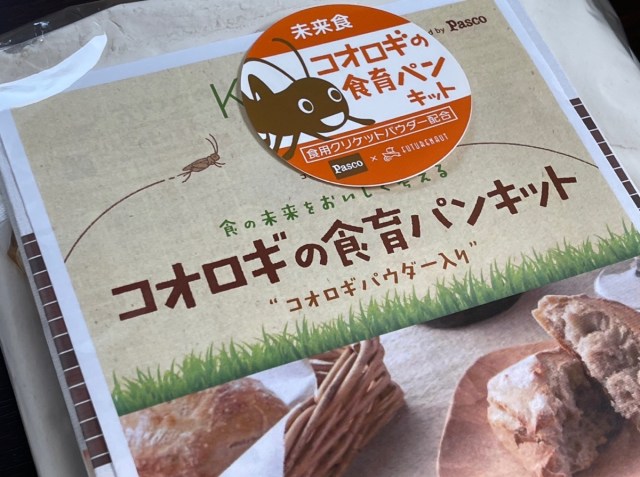
We try some home baking with one of the most cutting-edge sustainable proteins around.
There’s a big push right now to try out meat alternatives due to the environmental impact of meat and dairy farming, hence the emphasis on meatless products. Of course, not all meat is farmed equally. Some meats are much more sustainable when compared to beef and pork, and might be an option to consider when changing up your diet! Unfortunately, the meats we’re talking about come from insects.
Some products like Muji’s cricket crackers and the edible bugs available in vending machines have seen success, but let’s be real—most people don’t find insects appetizing, and especially not when they’re intact.
Pasco Shikishima, a company known throughout Japan for its bread and baking products, has taken a step to normalize insect edibility with a new Future Foods project, Korogi (Cricket) Cafe. Through their dedicated website, you can order a bread-baking kit that comes with two bags of cricket powder with which to fortify your loaves. So we did exactly that.
▼ The kit costs 2,376 yen (US$21.49).
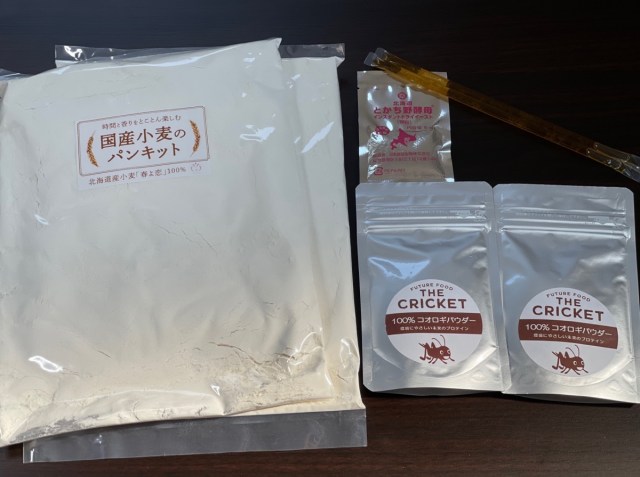
The kit comes with a 330-gram (1.4-cup) bag of Hokkaido-sourced wheat flour, two 30-gram (0.25-cup) bags of cricket powder, 5 grams (1.13 teaspoons) of instant yeast, and two 6-gram (1.4-teaspoon) sachets of honey—enough to bake two full loaves of delicious cricket bread.
We’ve only tried our hand at baking a couple of times before, and always with the assistance of baking kits. So this should be…interesting!
▼ Opening the bag produces a fragrant aroma almost like roasted nuts.
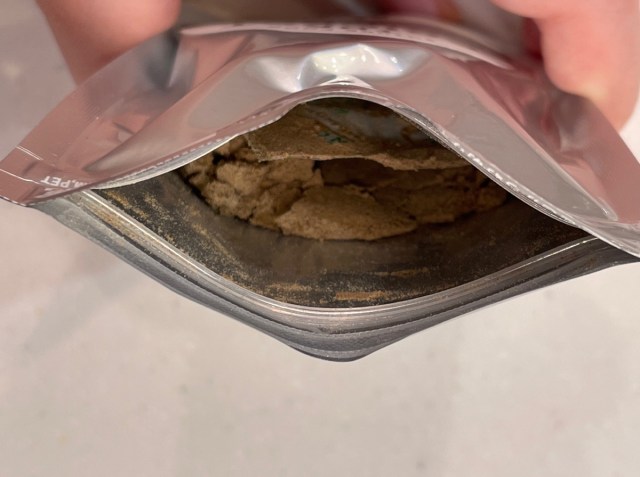
We poured out the contents of the cricket powder into a bowl and marveled at how thoroughly normal it looked. No creepy-crawly bits or stray legs, just a grainy substance that almost resembled cocoa powder.
▼ Yes, reader, we licked the raw powder. It tasted like bitter medicine. Definitely cook it first!

We then followed the directions to mix salt, instant yeast, and cricket powder into the provided flour. The kit proclaimed that we could use as much or as little cricket powder as we liked. We’re no chickens, so we emptied the entire bag into the mix.
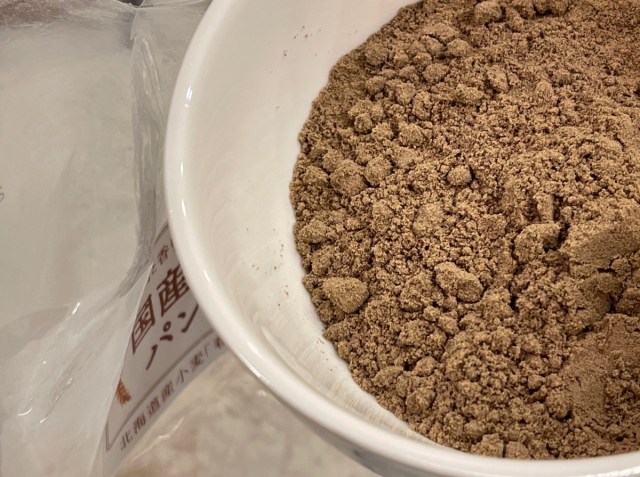
We’d initially assumed that the honey was included as a garnish to drizzle over your completed loaves. But no, the honey is added into the dough during the mixing stage!
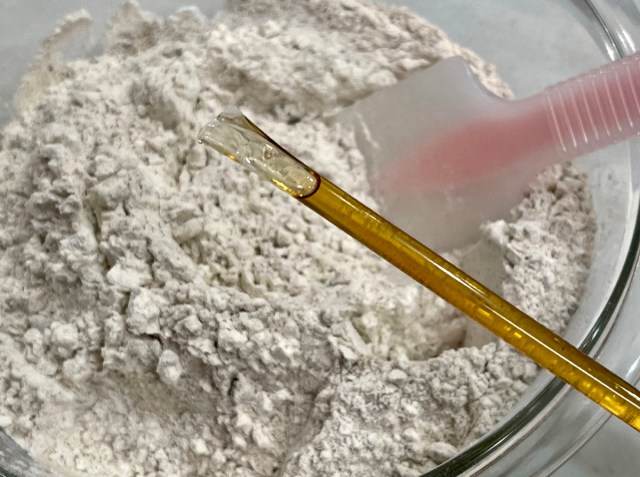
After mixing our dough we were left with this unappetizing greyish blob.
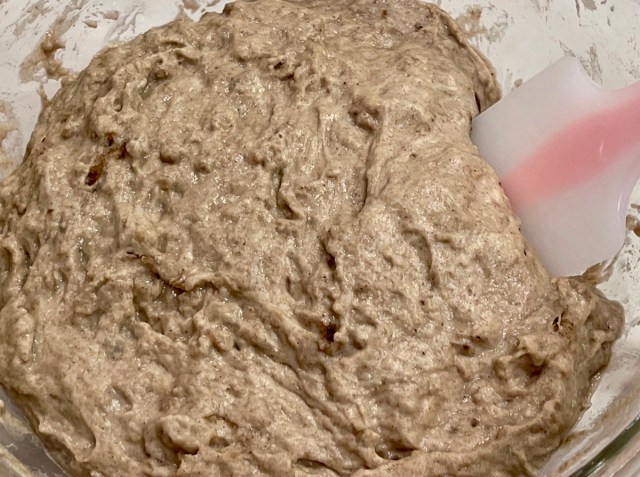
Time to leave it to ferment! We left it covered in the fridge overnight, where it stayed for 12 to 18 hours. When we came back to check on it, the dough had expanded quite nicely. Or…wait. The kit described the dough as being “gentle”, so we had actually over-fermented our dough. Curses!
▼ We hadn’t been super specific when measuring out the yeast, which is probably how this happened.
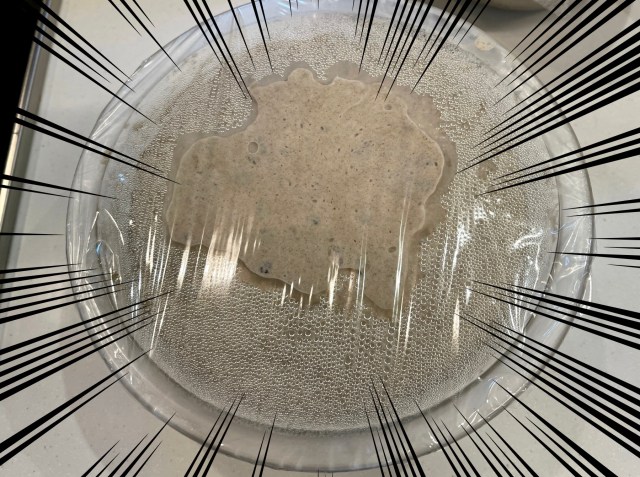
The dough was quite moist, as the manual warned us. This made it very sticky. It stuck to pretty much every surface we introduced it to.
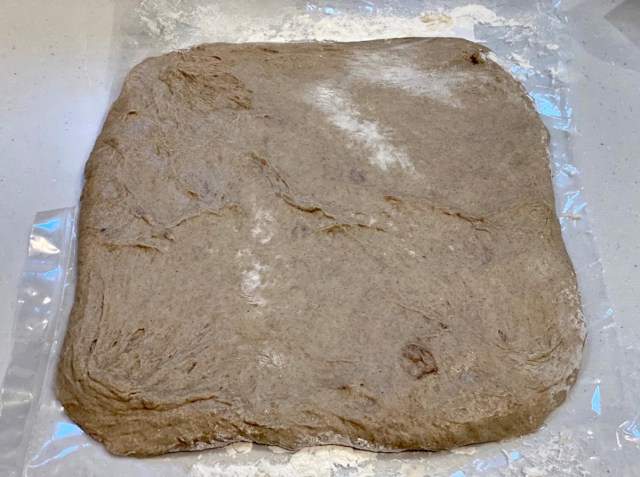
We dusted the area liberally to try to counteract this and then rolled it out as best as we could. The idea was to get it into a rectangle shape, but…well, we did our best.
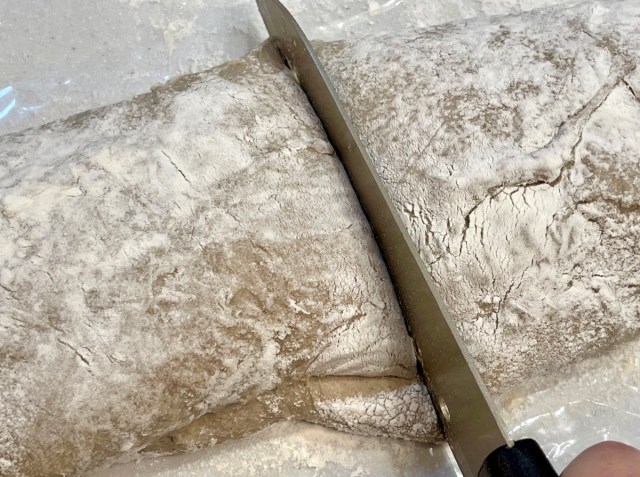
Here, we folded the dough over three times and then split the dough into eighths. More flour was dusted atop of the individual pieces so that we could make incisions with the kitchen scissors. Scoring the bread helps it to rise consistently, but each time we slashed our bread the cut healed immediately like the skin of a shonen anime villain with regenerative powers.
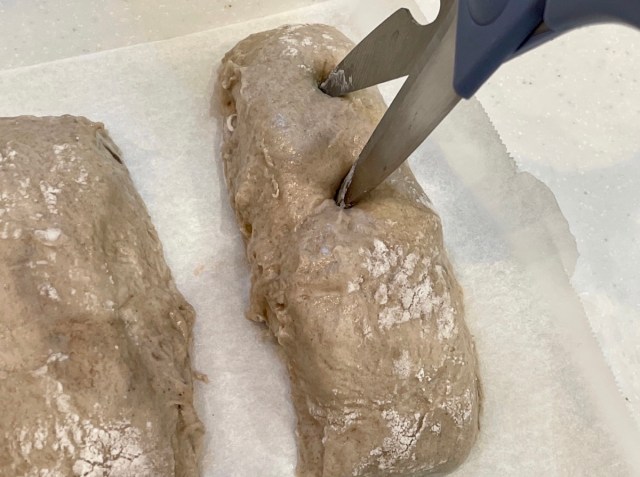
Then we hit another snag. The manual asked us to ensure that our oven was set to “steam” as the loaves baked. We had a simple toaster oven, which specializes in heating frozen food, and warming up eye masks. We put a little paper case into the oven along with a dash of water and hoped for the best.
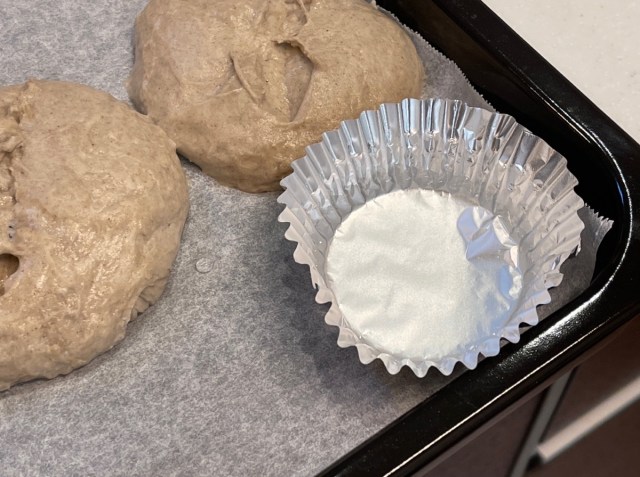
After twenty minutes, here’s how our loaves looked!
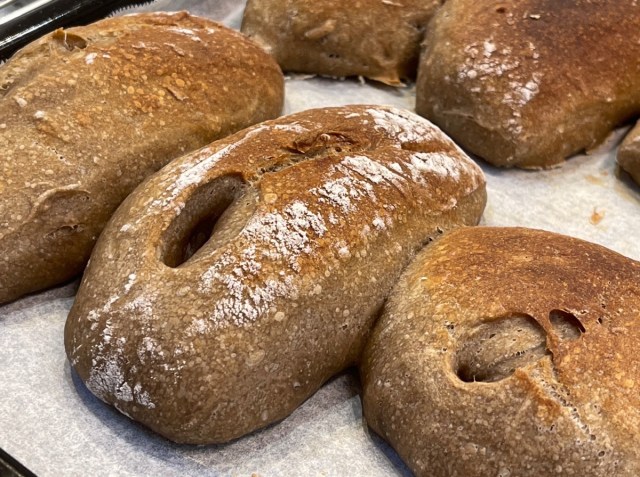
The resulting bread was a simple rustic French loaf with a crunchy crust. The crickets lend it an earthy, dark color similar to rye.
▼ We baked one loaf without cricket powder for comparison’s sake.
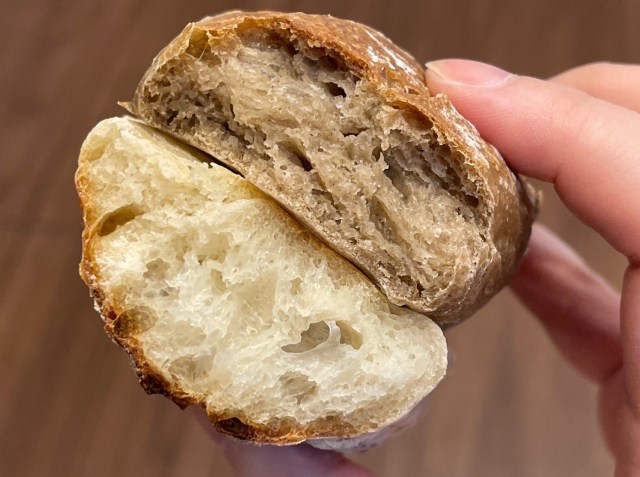
The aroma from the cricket powder, that roasted nut scent, is still very much present after baking the loaf. And despite over-proofing our dough, we found that the bread came out with a crunchy, crisp crust and a soft and chewy center! A success!
▼ Fresh-baked bread is delicious, crickets or no crickets.
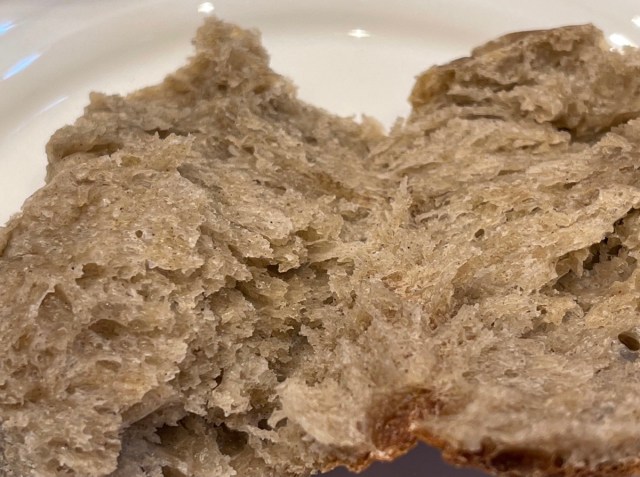
The crickets only add a subtle flavor to the bread without changing anything too drastically. The crickets in question are sourced from a sustainable, edible-cricket farm in Thailand and provide a nutrient-dense protein to whatever they’re mixed into.
Personally, we’re pretty squeamish when it comes to bugs. But the amount of information about the cricket farming process, the nutritional properties, and the step-by-step instructions for how to utilise them definitely eased our fears long enough to try this out. This might make for a good baking project with your kids to help them get used to the idea of consuming insects—and potentially cooking with them more often in the future!
Related: Pasco Future Foods Labo — Korogi Cafe
Images © SoraNews24
● Want to hear about SoraNews24’s latest articles as soon as they’re published? Follow us on Facebook and Twitter!

No hay comentarios:
Publicar un comentario